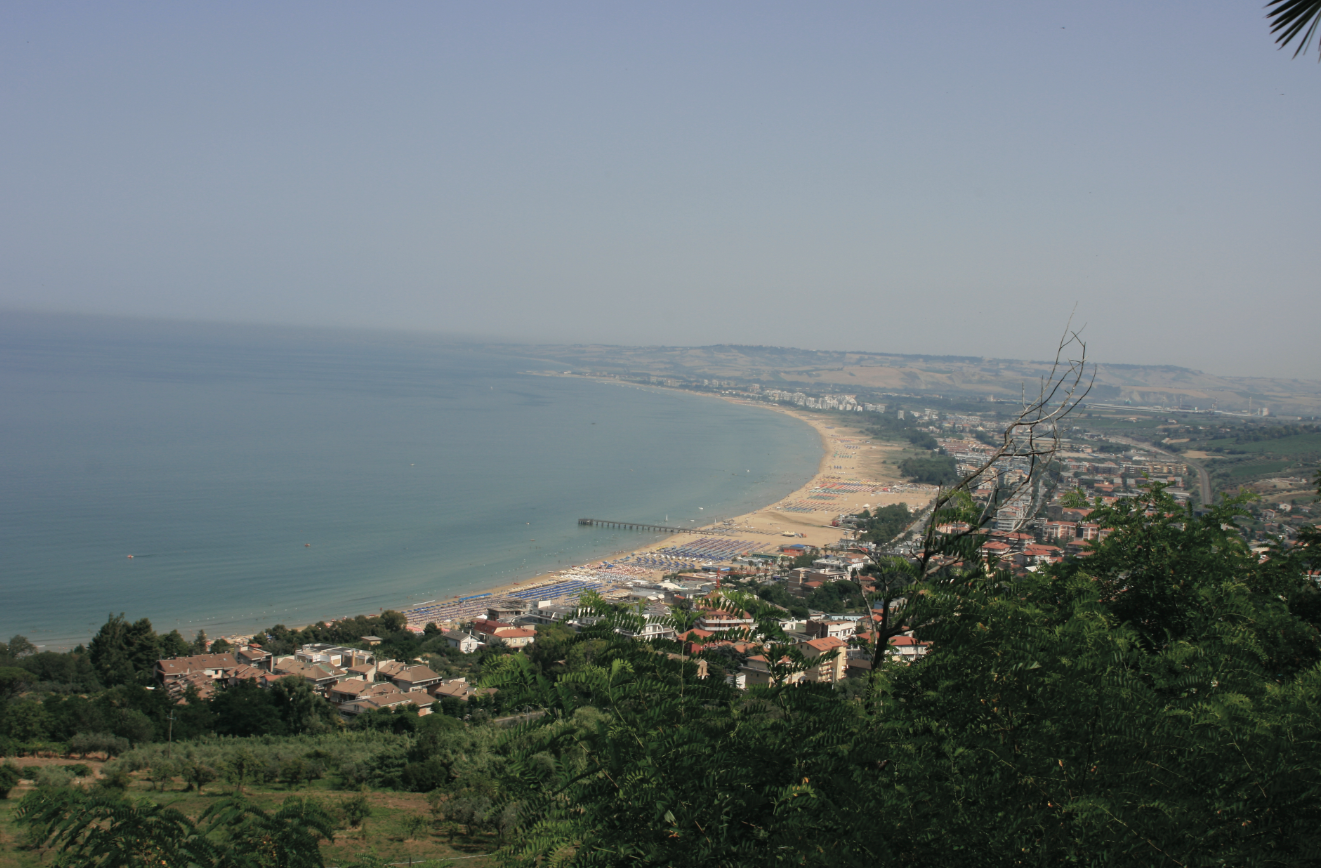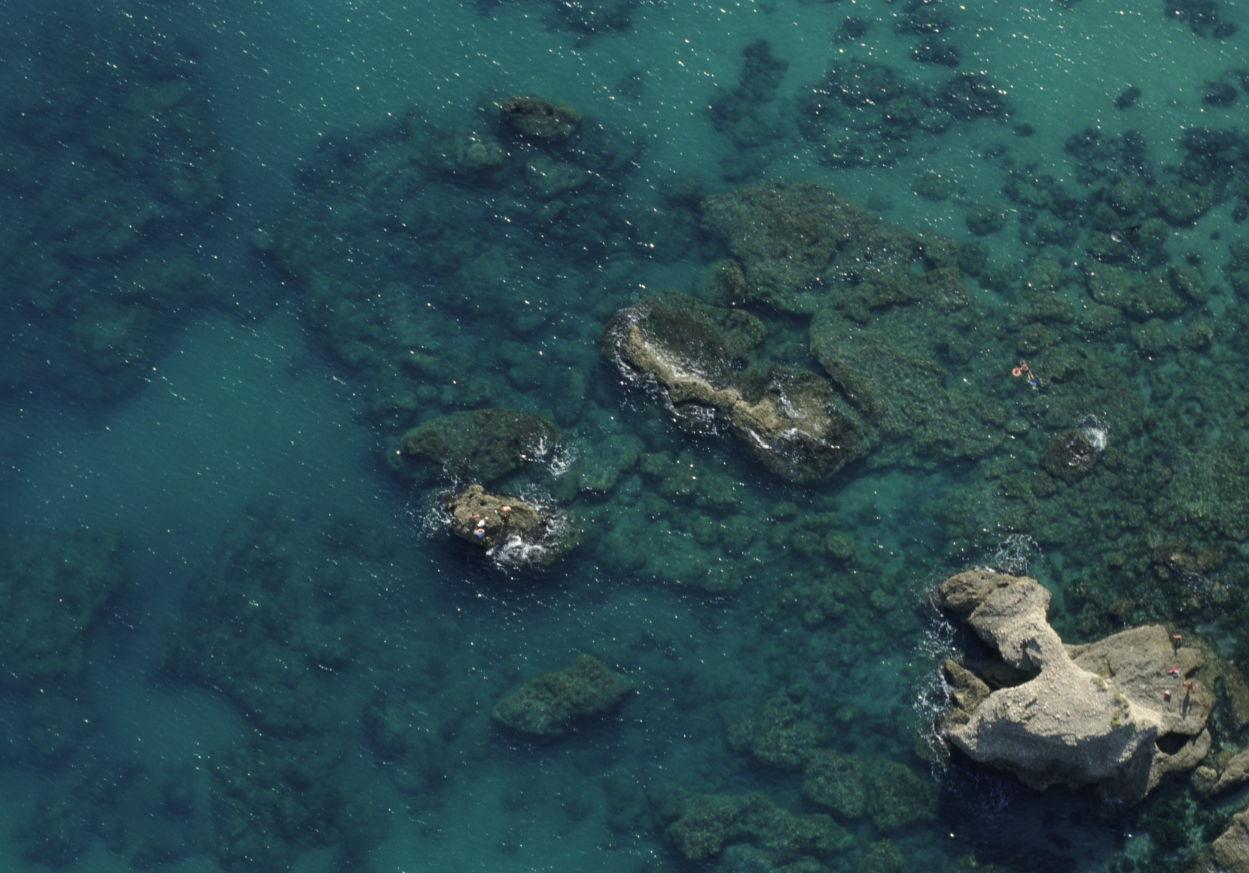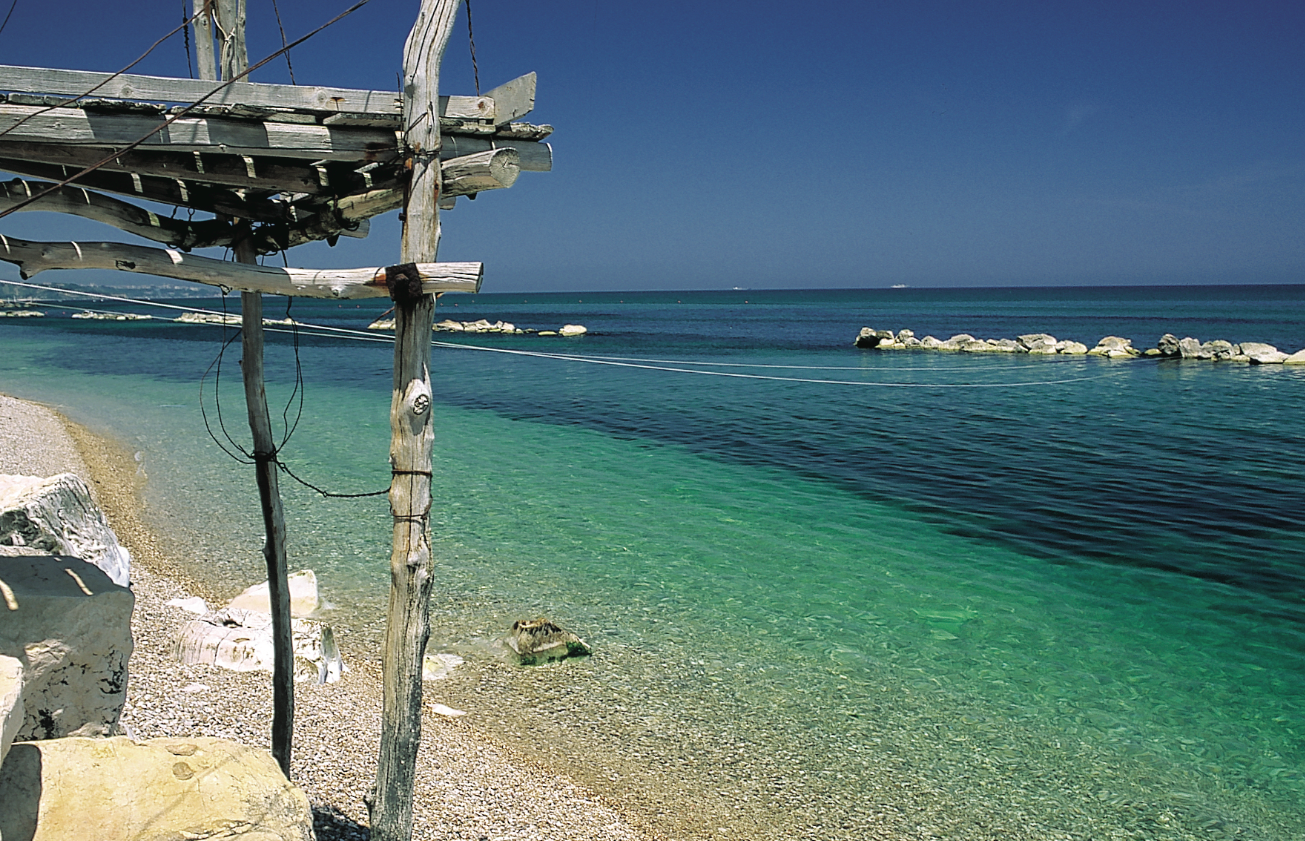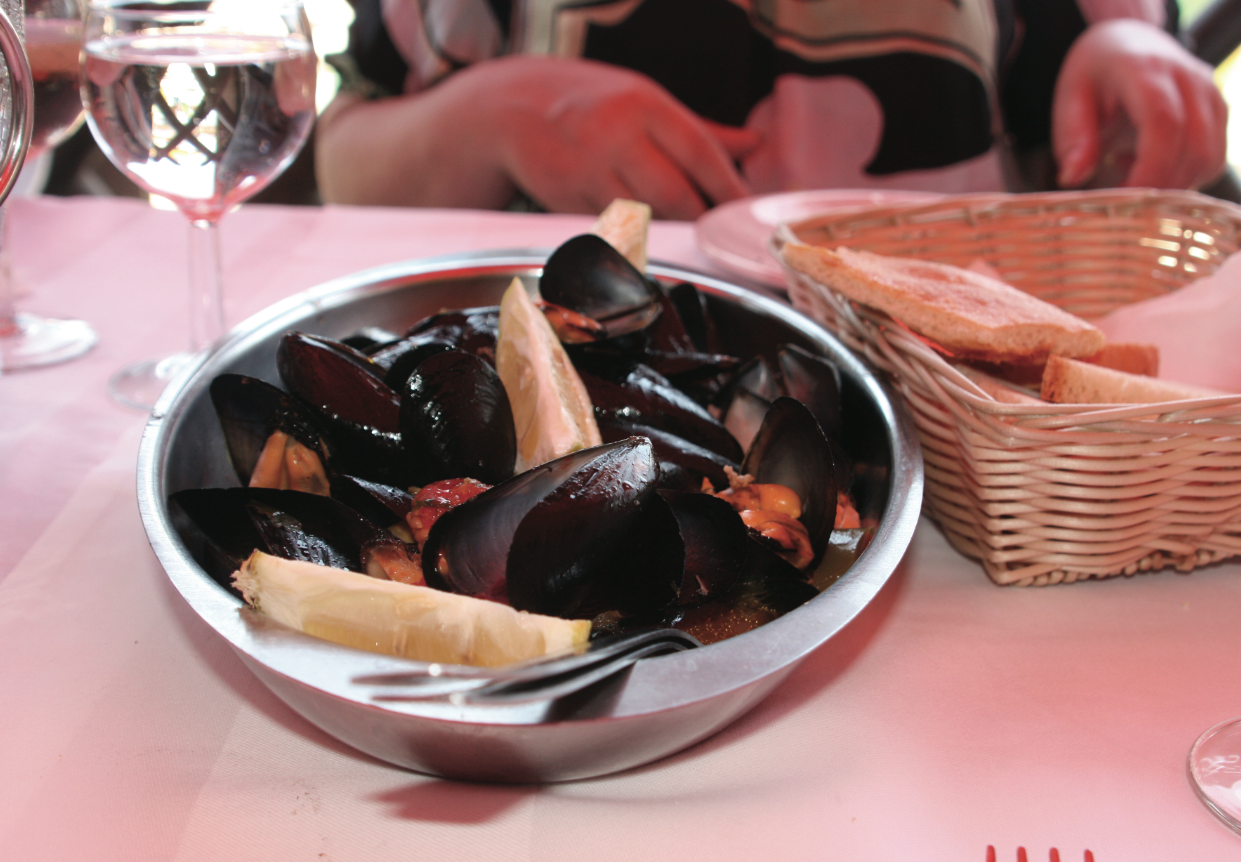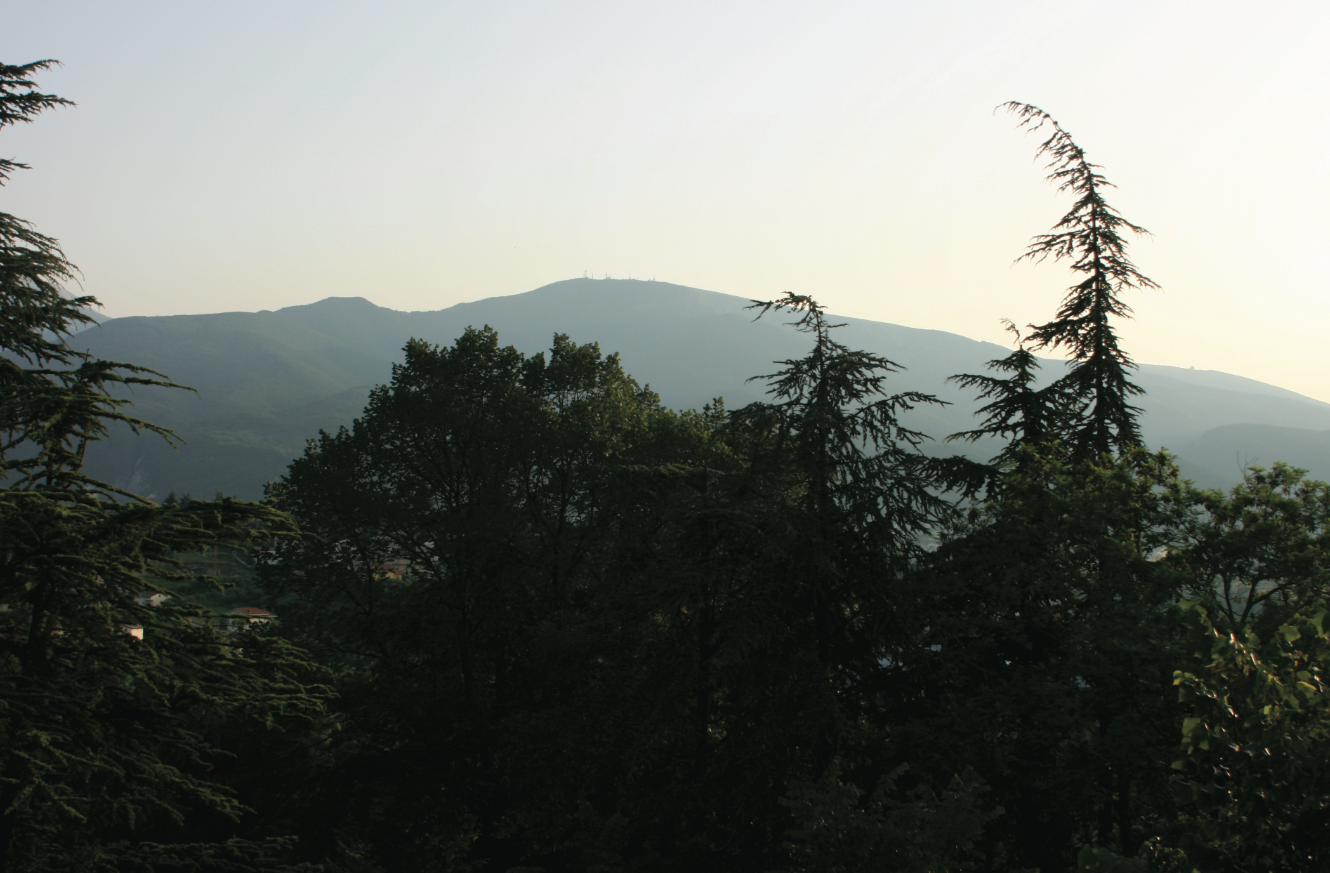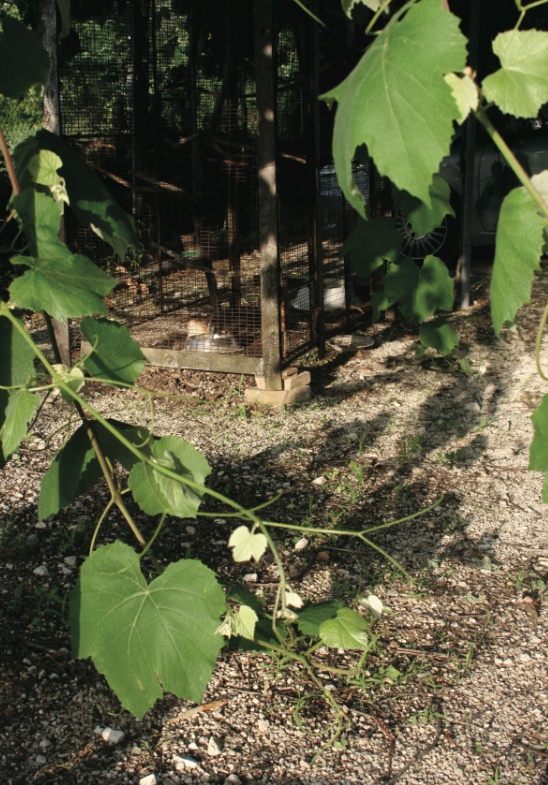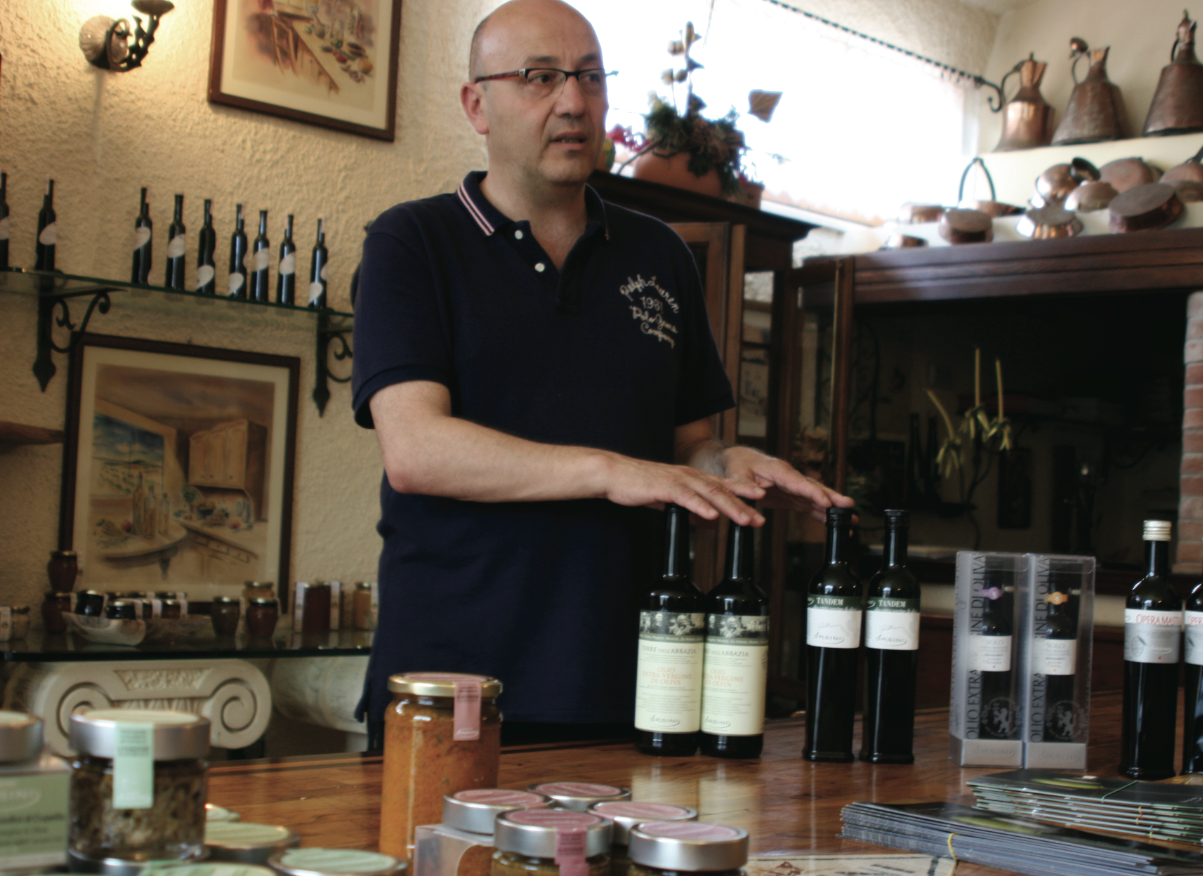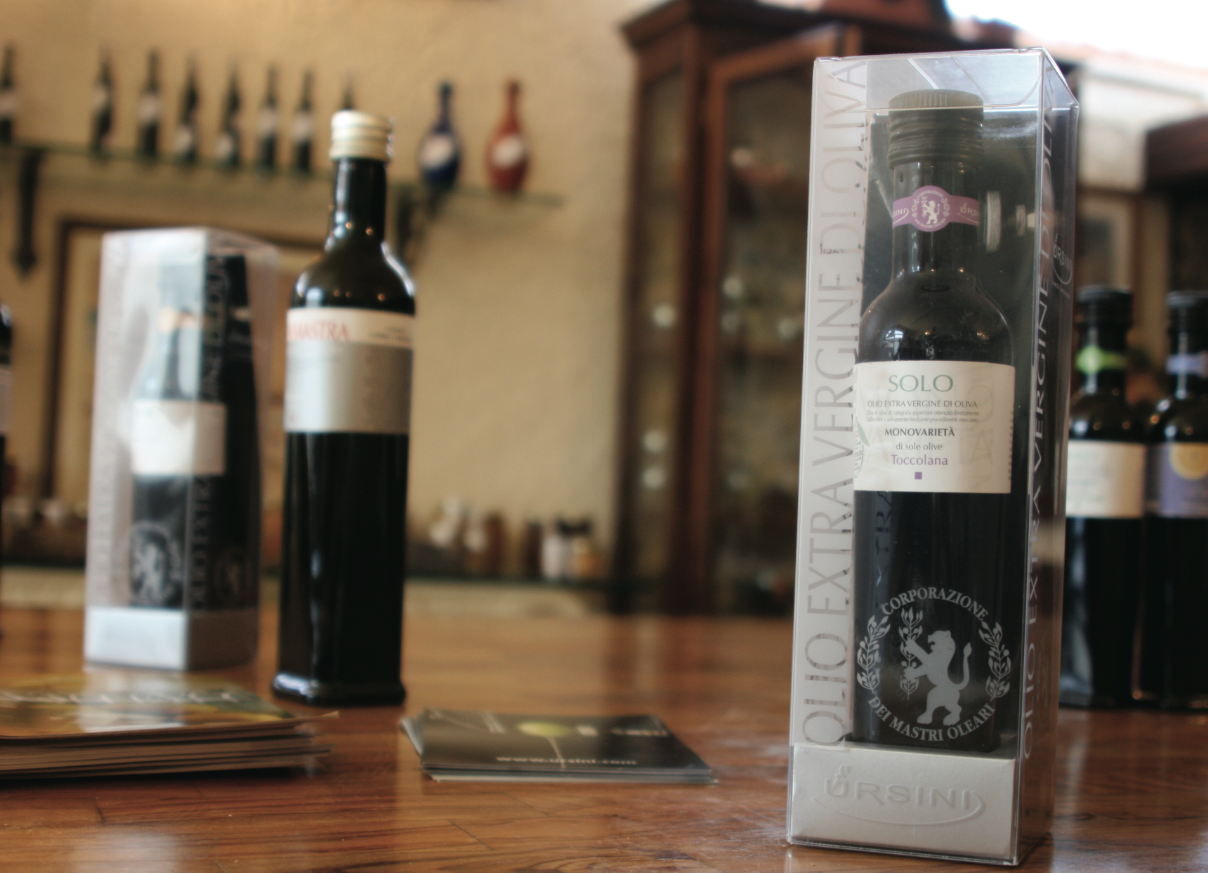Marine snails, Pecorino grapes and square spaghetti, we embark on a gourmet tour of one of Italy’s most striking regions
The Abruzzo region is commonly associated with the words forte e gentile (strong and gentle), conjuring up images of the powerful mountains that tower above the tranquil sea just a few kilometres away. It is an area of marked contrasts – and they didn’t fail to amaze me every time I glanced out of the car window and had to choose between viewing the village-scattered coastline to my left, or gazing at cloud-topped mountains to my right. I was on a mission to discover how two such opposing landscapes both play a part in the gastronomic traditions of Abruzzo’s most densely populated province, Chieti.
Specialities of the sea
At one time the only economic activity along the Chieti coastline was fishing, so naturally my first task was to discover more about the seafood of the area – a search that took me to Vasto. Vasto is not only home to a beautiful old city, but boasts one of the major ports in the province, and it didn’t take long for me to discover how proud its people are of their fishing achievements.
I sat down and a steaming terracotta pot, filled with countless types of fish was placed in front of me – this was Vasto speciality, Brodetto alla Vastese, and it made my mouth water with anticipation. The locals insist that preparation is the key to appreciating this dish – first you place a piece of fresh bread in the centre of your bowl, then pour over enough tomato and garlic juice to seep into every corner of the bread.
Only then can you select your seafood from the pot – a combination of mussels, clams, scampi, cuttlefish, cod, sole, smooth hound… the list goes on. The dish is a true taste explosion – the smooth skins of the fish contrasting against the bread, and the bitter tang of tomatoes hitting the back of my throat as the pot’s flavours combined. It’s no wonder that Vasto holds a festival each summer just to celebrate that one dish.
But the sea’s culinary delights don’t end there, and great quantities of of fish are hauled in from the ocean each day. One of my favourite sights of the entire trip was the Golfo D’Oro (Golden Gulf) and its trabocchi-lined waters. Lasting evidence of the area’s previous reliance on fishing, trabocchi are hut-like shacks jutting out into the sea, with fishing nets connected to the back, which mean being able to fish without ever having to take a boat out.
I experienced a trabocco up close in the form of Trabocco Pesce Palombo – Bruno Veri’s breathtaking restaurant. Set a few metres out at sea, where the evening mist blends sea with sky, the delightfully peaceful surroundings were only topped by the selection of food on offer. One of the must-try dishes here is frittura mista di frutti di mare – battered anchovies topped with a fish ball, all beautifully presented in a paper cone. This is fish and chips as you’ve never seen or tasted it before!
As the evening drew to a close, Bruno Veri gave a fascinating demonstration of how the trabocco fishing system works. The net is lowered into the water for ten minutes, with nothing but tiny shadows of unsuspecting fish to be seen. But as the net rises back up, the peace of the lapping water is interrupted by the soft rippling of silver bodies and tails frantically colliding – the gentle music of the Chieti coastline.
Moving to the mountains
As you move further inland and the shades of green become richer, the local food takes on the characteristics of this countryside – simple and rugged, yet still quite delightful. One thing that the food from the coast and mountains do have in common is that neither betrays their humble heritage. The Abruzzo of the past was not a wealthy place, and its inhabitants had to make the most of the produce around them to create nutritious dishes. And although the area’s economy has greatly improved, pride in the traditional cuisine endures.
My initial exploration of Abruzzo’s inland delicacies came courtesy of a small restaurant called Villa Maielle, and my first taste of the mountains was the pallotte cacao e uovo – a poor man’s meatballs. Made of bread, cheese and egg, they embody Chieti’s tradition of creating appetising dishes from very few ingredients. The texture is light, a strong hint of cheese shines through, and the accompanying tomato sauce adds a fresh, lively touch that resembles anything but a peasant dish!
The restaurant’s nonna served up another of the mountains’ hearty dishes – maccheroni. The ingredients again are simple – eggs and flour, but the beauty is in the preparation. Once the dough was made, the 70-year-old woman began rolling it out into thin sheets. It was then that she produced her pasta-making instrument of choice – a wooden box-type construction with metal strings called a chitarra. Rolling the pasta over the top and forcing small strands to fall through she created square strands of spaghetti, with a soft tinkling sound filling the air as the rolling pin vibrated against the wires – the mountains’ contribution to Chieti’s delightful natural music.
Taking to the Vines
But of course no Italian meal would be complete without a glass of wine. You can discover that 80 per cent of Abruzzo’s wine exports come from Chieti in a guidebook, but it is only when you arrive in the province and find yourself surrounded by vines at every turn, that you realise the importance of wine here.
The best way to get a feel for the region’s wines is to visit one of the vineyards, which is how I found myself at Dora Sarchese. As with many Italian producers, this is very much a family affair, with the 70,000 square metres of vines being tended by a mother, her two daughters and son. As closely connected as local food is with Abruzzo’s natural environment, I soon learnt that there is no closer connection than that of the grape and the winemaker.
As the son Domenico d’Auria took us around the vineyard he referred to the grapes as his ‘babies’, and explained that it’s the vines themselves that are truly important – the wine is just a happy consequence. Dora Sarchese vineyard’s selection of wine is impressive, but the silky smooth Lapis, made from the region’s famous Montepulciano grape was my first and favourite taste of the vineyard’s excellent offerings.
Moving on from Dora Sarchese, the final stage in my quest took me to another wine producer with an alliance with nature. Agriverde became the first ‘bioagricultural’ winery in Italy in 1989. The buildings here were altered to echo the rolling waves and sloping hills of the surrounding countryside, and organic farming plays its part in the production of the wine. And this eco-philosophy is obviously working, as the company’s excellent Plateo wine was selected as the drink of choice to be served at a recent Nobel prize-giving ceremony.
As we settled down in the winery’s restaurant we were introduced to a few more enogastronomic specialities of the area. The Solarea was a favourite, with its strong honey flavour and intense colour that derive from the region’s popular Trebbiano grape. But when the company’s president Giannicola Di Carlo introduced Riseis di Recastro, and explained that it was made from Pecorino, I began to wonder if this was starting to take the cheese and wine combination a little too far. Thankfully, I soon learnt that the area’s popular Pecorino is actually a grape, which is so named because of its resemblance to a sheep’s brain.
Throughout my trip to Abruzzo, new and intriguing Chieti specialities popped up everywhere – olive oil, preserved vegetables, honey vinegar… more than could possibly be explored in one article or a few days’ visit. But one thing is for sure – if you have any interest in fine Italian food and a passion for gorgeous scenery and friendly people, Abruzzo should go straight to the top of your list of Italian must-see destinations.

